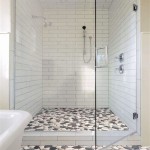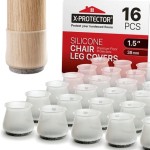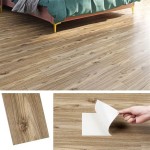Selecting Tiles for Bathroom Walls and Floors
The selection of tiles for bathroom walls and floors constitutes a crucial element in the overall design and functionality of this essential space. Careful consideration is required to ensure the chosen tiles not only complement the desired aesthetic but also withstand the specific environmental conditions present in a bathroom, such as high humidity and frequent exposure to water. The optimal choice involves a balance between aesthetic appeal, durability, safety, and ease of maintenance.
A multitude of tile options are available, each exhibiting unique characteristics regarding material composition, size, shape, texture, and color. Understanding these variations is paramount for making an informed decision that aligns with both personal preferences and practical needs. The following sections will explore key factors to consider when selecting tiles for bathroom walls and floors, focusing on material types, relevant properties, and design considerations.
Material Matters: Exploring Tile Types
The material from which a tile is constructed significantly influences its performance and suitability for bathroom applications. Common tile materials include ceramic, porcelain, natural stone, glass, and mosaic. Each material possesses distinct advantages and disadvantages that should be carefully weighed.
Ceramic Tiles: Ceramic tiles represent a cost-effective and widely utilized option. They are manufactured from clay that is fired at high temperatures, resulting in a durable and water-resistant surface. Ceramic tiles are available in a vast array of colors, patterns, and sizes, offering considerable design flexibility. However, ceramic tiles are typically less dense and less durable than porcelain tiles, making them more susceptible to chipping and cracking, particularly in high-traffic areas.
Porcelain Tiles: Porcelain tiles are a subset of ceramic tiles, but they are manufactured using a finer clay and fired at even higher temperatures. This process results in a tile that is denser, harder, and more water-resistant than standard ceramic tiles. Porcelain tiles are exceptionally durable and resistant to scratches, stains, and fading, making them an excellent choice for both walls and floors in bathrooms. Their lower water absorption rate further enhances their suitability for wet environments. Porcelain tiles can also mimic the appearance of natural stone or wood, offering aesthetic versatility.
Natural Stone Tiles: Natural stone tiles, such as granite, marble, slate, and travertine, impart a luxurious and sophisticated aesthetic to bathrooms. Each type of natural stone exhibits unique veining, color variations, and textures, creating a visually distinctive surface. Natural stone tiles are inherently durable and can withstand heavy use. However, they typically require sealing to protect against staining and water damage. Furthermore, certain types of natural stone, such as marble, are more porous and susceptible to etching from acidic cleaners or spills. The cost of natural stone tiles is generally higher than that of ceramic or porcelain tiles.
Glass Tiles: Glass tiles are a visually striking option that can add a touch of elegance and modernity to bathroom walls. They are available in a wide range of colors, shapes, and sizes, and their smooth, non-porous surface makes them highly resistant to staining and mildew. Glass tiles are particularly effective for creating accent walls or decorative borders. However, glass tiles are typically less durable than other tile materials and are generally not recommended for use on bathroom floors due to their slippery surface and susceptibility to scratching.
Mosaic Tiles: Mosaic tiles consist of small pieces of ceramic, porcelain, glass, or stone that are arranged on a mesh backing. They offer exceptional design flexibility, allowing for intricate patterns and custom designs. Mosaic tiles are commonly used for creating accents, backsplashes, or decorative borders. Their small size allows them to conform to curved surfaces, making them suitable for shower niches or other architectural features. While mosaic tiles can be used on bathroom floors, the numerous grout lines require more frequent cleaning and maintenance.
Key Properties: Durability, Water Resistance, and Slip Resistance
Beyond material type, several key properties influence the suitability of a tile for bathroom applications. These include durability, water resistance, and slip resistance. Understanding these properties is essential for selecting tiles that will perform reliably and safely in the demanding environment of a bathroom.
Durability: The durability of a tile refers to its ability to withstand wear and tear, including scratches, chips, and cracks. This is particularly important for bathroom floors, which are subject to frequent foot traffic. Porcelain tiles are generally considered the most durable option, followed by natural stone and ceramic tiles. The Porcelain Enamel Institute (PEI) rating system provides a measure of a tile's abrasion resistance, with higher ratings indicating greater durability. For bathroom floors, a PEI rating of 3 or higher is recommended.
Water Resistance: Bathrooms are inherently wet environments, so water resistance is a critical consideration when selecting tiles. Tiles with a low water absorption rate are less likely to become stained, mildewed, or damaged by moisture. Porcelain tiles have the lowest water absorption rate, making them an ideal choice for bathrooms. The water absorption rate is typically expressed as a percentage, with lower percentages indicating greater water resistance. Ceramic tiles have a higher water absorption rate than porcelain tiles, and natural stone tiles often require sealing to improve their water resistance.
Slip Resistance: Slip resistance is essential for ensuring safety in bathrooms, particularly on floors. Wet surfaces can become slippery, increasing the risk of falls. Tiles with a textured surface or a slip-resistant finish provide better traction and reduce the likelihood of accidents. The Dynamic Coefficient of Friction (DCOF) is a measure of a tile's slip resistance, with higher DCOF values indicating greater slip resistance. For bathroom floors, a DCOF of 0.42 or higher is generally recommended. Natural stone tiles often have a naturally textured surface that provides good slip resistance, while some ceramic and porcelain tiles are available with slip-resistant finishes. Smaller tiles with more grout lines also enhance slip resistance.
Design Considerations: Size, Color, and Texture
In addition to material and performance properties, design considerations play a significant role in the selection of bathroom tiles. The size, color, and texture of the tiles can significantly impact the overall aesthetic of the space and create a desired ambiance.
Tile Size: The size of the tiles can influence the perceived size and scale of the bathroom. Larger tiles can make a small bathroom appear larger by minimizing grout lines and creating a more seamless look. Smaller tiles, on the other hand, can add visual interest and texture to a larger bathroom. The choice of tile size should also consider the size of the bathroom fixtures and the overall design style. Large format tiles are increasingly popular for creating a contemporary and minimalist look, while smaller mosaic tiles are often used for creating intricate patterns and accents.
Tile Color: The color of the tiles can significantly impact the mood and atmosphere of the bathroom. Light-colored tiles can make a bathroom feel brighter and more spacious, while dark-colored tiles can create a more dramatic and intimate atmosphere. Neutral colors, such as white, gray, and beige, are versatile and can be easily paired with other design elements. Color can also be used to highlight specific areas of the bathroom, such as the shower or vanity. Consider the natural and artificial lighting in the bathroom when selecting tile colors, as lighting can affect how colors appear.
Tile Texture: The texture of the tiles can add depth and dimension to the bathroom. Textured tiles can also provide better slip resistance, making them a practical choice for bathroom floors. Smooth tiles are easier to clean and maintain, while textured tiles can conceal dirt and grime more effectively. The choice of tile texture should consider the overall design style and the desired level of maintenance. Textured tiles that mimic natural stone or wood can create a more organic and rustic feel, while smooth, glossy tiles can create a more modern and sophisticated look. Grout lines also contribute to the overall texture of the tiled surface, and the color and width of the grout lines can be used to enhance the design.
When selecting tiles, consider the overall design scheme of the bathroom. The tiles should complement the other fixtures, cabinets, and accessories in the space. It may be helpful to gather samples of different tiles and compare them in the actual bathroom environment to ensure that the colors and textures coordinate well. Also, consider the long-term maintenance requirements of the chosen tiles. Some tiles require more frequent cleaning and sealing than others, and the level of maintenance should be factored into the decision-making process.
Ultimately, selecting tiles for bathroom walls and floors requires a careful assessment of material properties, performance characteristics, and design considerations. By understanding the various options available and their respective advantages and disadvantages, one can make an informed decision that results in a beautiful, functional, and safe bathroom space.

5 Reasons Ceramic Tiles Work In Bathrooms Direct

Pin On Bathroom Style

20 Popular Bathroom Tile Ideas Wall And Floor Tiles

Bathroom Floor And Wall Tiles World Of Bathrooms Wood Flooring

Bathroom Tile Idea Use The Same On Floors And Walls

25 Bathroom Floor Tile Ideas For The Prettiest Privy Ever

10 Bathroom Floor Wall Tile Ideas Bridport Glass Centre

Bathroom Tiles For Modern Homes Supergres

The Difference Between Floor Tile And Wall

Tiling Your Bathroom How Much Types Of Tiles You Will Need







